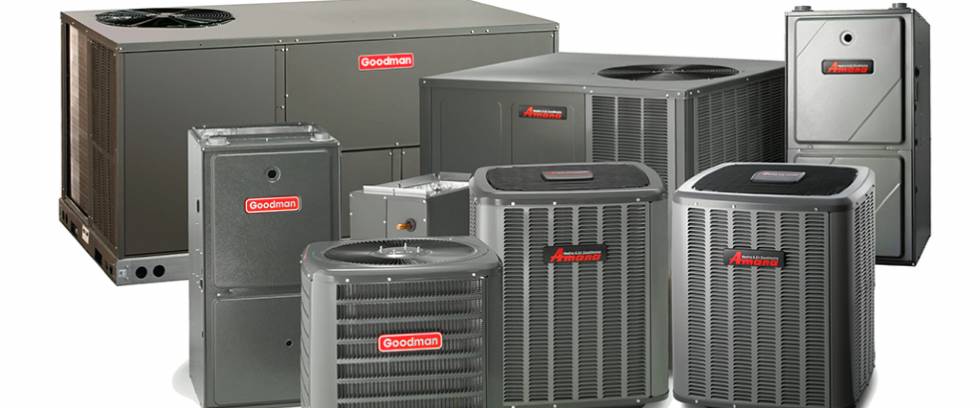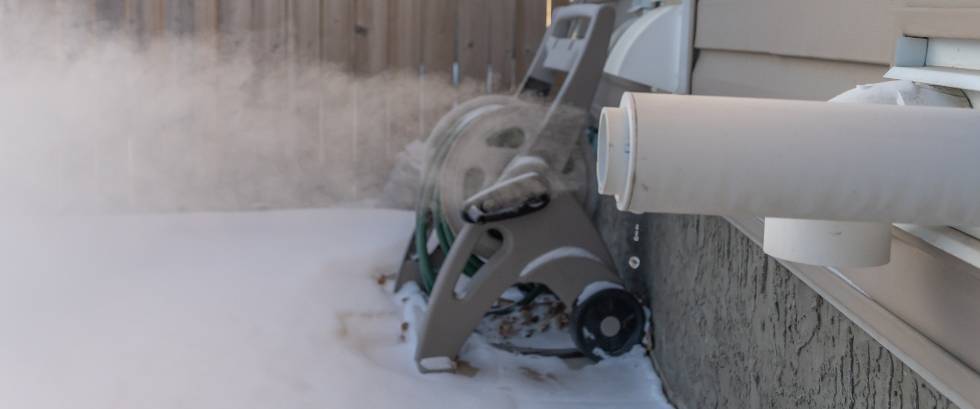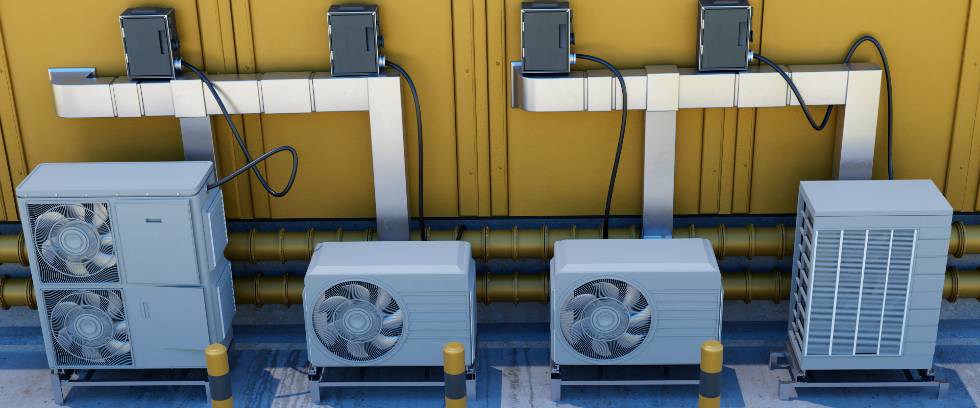There are various types and designs of furnaces, which can be broadly categorized into two main types: electric and gas furnaces. Gas furnaces run on natural gas, while electric ones are powered by electricity. Continue reading High-Efficiency Furnace Guide.

- What is a High-Efficiency Furnace?
- How is Furnace Efficiency Measured?
- How Does a High-Efficiency Furnace Work?
- Standard Efficiency vs. High-Efficiency Gas Furnaces
- Does a Gas Furnace Produce Waste?
- Which Furnace Heats Better: Gas or Electric?
- What Is the Environmental Impact of Gas Furnaces?
- How Does High-Efficiency Furnace Save Me Money?
- How Much Does a Furnace Replacement Cost?
- What Next?
Maybe you’ve heard about high-efficiency furnaces and wonder if your current furnace deserves the title.
This guide discusses high-efficiency furnaces and why it is worthwhile to own one.
What is a High-Efficiency Furnace?
All furnaces do the same job; however, their performance efficiencies differ. High-efficiency furnaces, also called condensing furnaces, are those whose efficiency ranges between 90% and 100% AFUE. AFUE represents Annual Fuel Utilization Efficiency and is the standard unit for measuring furnace efficiency.
In other words, high-efficiency furnaces are those that direct at least 90 percent of the heat generated toward warming your home.
Generally, electric furnaces are highly energy efficient because they convert all electrical energy into heat energy, which is then entirely used to heat the building without waste. Thus, electric furnaces have a 100% AFUE and are labeled high-efficiency devices.
On the other hand, gas furnaces may be high efficiency or standard efficiency. A high-efficiency gas furnace is one whose AFUE value ranges between 90 to 98%. Unlike their electric counterparts, no gas furnace is 100% efficient. Nonetheless, with a 90% and above AFUE rating, a gas furnace is said to be high efficiency.
For the purpose of this article, our discussion and analysis of furnace efficiency will focus on gas furnaces since electric furnaces are, by default, 100% efficient.
How is Furnace Efficiency Measured?
The efficiency of a furnace is measured by comparing the amount of heat generated to the actual amount of heat that goes into heating your home. This value is measured in AFUE and can take any value up to 100%.
For instance, if your furnace has 80 percent AFUE, this implies that only 80 percent of the heat generated with your money actually goes into heating your home. The remaining 20 percent is lost via exhaust due to machine operations. As a result, for every dollar spent on a gas furnace to heat your home, you get a service value equivalent to 80 cents.
It’s worth mentioning that a furnace’s heating efficiency is also measured in terms of BTU (BTU represents the British Thermal Unit, and one BTU is the amount of heat needed to raise the temperature of a pound of water by 1°F.

How Does a High-Efficiency Furnace Work?
Condensing or high-efficiency furnaces contain special design adjustments that make them more efficient than conventional ones. In addition, high-efficiency furnaces come with a secondary heat exchanger, which allows the furnace to recycle unused heat and redirect it into the building instead of releasing it as waste.
After recycling, only a fraction of the initial waste is eventually exhausted, thus boosting the system’s efficiency. Unfortunately, standard furnace models lack a secondary heat exchanger, so they cannot recycle the initial waste and, thus, aren’t as efficient.
The availability of a secondary heat exchanger in high-efficiency gas furnaces helps with energy savings as most of the initial unused energy is redirected toward heating the home instead of allowing it to escape as waste.
Standard Efficiency vs. High-Efficiency Gas Furnaces
Regardless of the design of a gas furnace, they can be categorized based on efficiency into standard efficiency and high efficiency. Standard efficiency furnaces are those whose AFUE ratings are less than 90 percent (typically around 80 percent), while high-efficiency models have a 90 percent and above AFUE rating.
The efficiency of a furnace is its ability to produce warm air that’s used in heating our buildings versus the quantity that ends up exhausted as waste. In other words, a high-efficiency furnace will convert more chemical energy into heat energy and use at least 90% of the energy to warm your home, thus minimizing energy loss.
As a result, a condensing furnace will consume less fuel to effectively keep your home warm during winter as compared to a standard furnace. The overall impact of the energy-saving ability of a condensing furnace will be seen on your fuel bill as you will tend to consume less fuel.

Does a Gas Furnace Produce Waste?
Gas furnaces give off liquid vapor of carbon dioxide and carbon monoxide as the main waste product of heat exchange. However, other substances like nitrogen gas and slag are also produced in micro quantities.
It’s important to ensure that the furnace is adequately vented so that waste gases can easily leave the building. Poor furnace venting causes combustion byproducts to find their way into your home and contaminate the air, leading to health issues like headaches, nausea, dizziness, and fatigue.
Generally, there are two ways your gas furnace can be vented:
- Through a metal that extends vertically upward and beyond the roof.
- Through PVC piping that’s extended horizontally outside the house.
Nonetheless, whether vertical or horizontal design, it’s best to use direct venting for greater efficiency and safety. Direct venting involves having two sealed pipes: one that brings fresh air from the outside and another that conveys waste gases from the furnace to the outside air.
Which Furnace Heats Better: Gas or Electric?
In terms of operational value, a gas furnace beats an electric one in many ways. First, gas furnaces can heat your home in only a fraction of the time it will take an electric furnace. Second, the heat produced by gas models is generally hotter than their electric counterparts. Due to this, you can warm your home quicker and more effectively with gas systems, especially if you live in areas with very cold climates.
Electric furnaces can direct all the energy generated toward heating your home, so they’re technically more efficient than gas systems. But, since they require more energy to operate, they tend to be costlier to run.
Electric furnaces typically work like a hair dryer. They feature a heat exchanger whose primary job is to pull air into the system. The air in the system gets warmed up by electric heating elements with high resistivity, and the resulting warm air is pushed into the home by a heat pump.
One of the core advantages of the electric furnace over gas systems is that they can offer both heating and cooling effect with a single unit, making them useful in cold and hot months. Gas systems can only heat your home and will be practically nonfunctional during summer.

What Is the Environmental Impact of Gas Furnaces?
When natural gas burns, it produces fewer air pollutants than coal or petroleum, which is why it’s considered a relatively clean burning fossil fuel.
Gas furnaces usually run-on natural gas, so they tend to be environmentally friendly, especially when you operate high-efficiency models.
Although it’s easy to think electric heating systems are the most environmentally friendly models since they do not require combustion. However, when you factor in the source of electricity which is primarily dirty and environmentally unfriendly, you’d realize that gas furnaces have the least environmental impact.
It’s vital to note that the initial cost of a high-efficiency furnace is usually high, but that’s the same with most green appliances. You can also install a high-efficiency heat pump outside to complement your gas system and provide a greener heating system. (ASHP) an air source heat pump operates by transferring heat absorbed from the outside air to the inside space.
How Does High-Efficiency Furnace Save Me Money?

A high-efficiency furnace can help you save money. When speaking about long-term cost-saving potential, a high-efficiency furnace is the ideal model to switch to.
The time it takes to recover your investment depends mainly on the frequency of usage, the high AFUE rating of your system, and the environment you will be using the furnace.
Generally speaking, the more you use your high-efficiency heating system, the more it saves running costs. Running a 95% efficient system can save up to $47.36 per $100, as indicated by The Department of Energy (DOE). Also, if you’re in very cold regions, you’d need to set your thermostat at high degrees (e.g., 80 degrees). Thus, it will take a shorter time to break even on your investment if your AFUE rating is high, compared to setting the thermostat at perhaps 65 degrees in moderately cold places.
Areas where the climate is usually very cold will find that high-efficiency furnaces make more investment sense since they can break even within less than six years of switching. So, if long-term cost savings is your priority, switching to a condensing furnace does the job perfectly.
How Much Does a Furnace Replacement Cost?
The price of furnace replacement depends on the brand, efficiency rating, and whether or not it includes other services. Such as installation fees, ductwork or ventilation modification, etc.
The prices below include the furnace installation fee but not ductwork or ventilation modification fee.
Standard Efficiency Furnace (~80%) Pricing:
- Single-stage: $3,000 – $4,000
- Two-stage: $3,700 – $5,500
- Modulating (variable-speed): $4,000 – $5,500
High-efficiency Furnace (90%+):
- Single-stage: $3,400 – $4,950
- Two-stage: $4,000 – $6,500
- Modulating (variable-speed): $6,000 – $7,500
What Next?
Not quite sure whether you should make the switch? Have questions or concerns about high-efficiency furnaces? We’re here to help!
As a top-rated heating company in Denver, we understand that switching to a condensing furnace can be quite an investment, so we want to ensure you’re absolutely confident that it’s the right decision whether you need a furnace repair or replacement. Reach out to JD’s Plumbing Heating and Air Conditioning today for knowledge and experience-driven advice.


